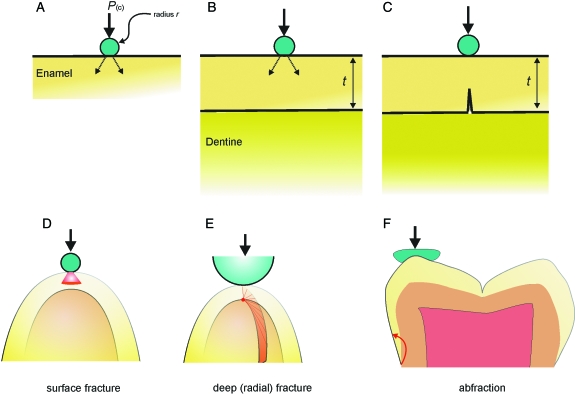Fig. 3.
Explanation of the adaptive value of enamel thickness. (A) The loading F endured by enamel [pictured in (B) and (C) with a thickness t] produced by a spherical particle of effective radius r. (D–F) The types of cracking behaviour likely to result. (D) A cone crack. In (E), the crack actually starts deep from the enamel–dentine junction and runs up to the surface. In (F), the crack starts around the cervical margin of the tooth (where the enamel meets the cement) and may result in a fragment falling from the side of the tooth. See text.

